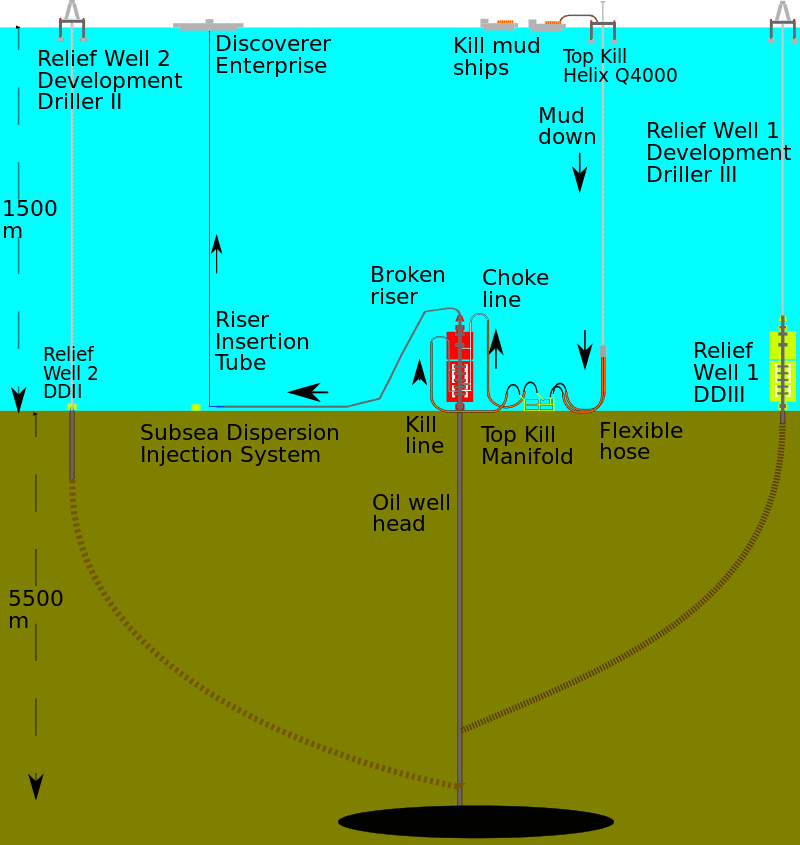If flow control cannot be achieved through the surface equipment attached to the blowout well, or if that equipment cannot be repaired or replaced in remedial well control operations, a relief well may be required to capture the out of control flow downhole rather than controlling it at the surface. A relief well is a new well sited adjacent to the initial well site, directionally drilled to intersect the blowout well in the subsurface slightly above where that well intersects the hydrocarbon bearing layer. Dynamic or static kill methods may be used to bring the well under control. Efforts may include pumping cement to permanently kill the flow of the well. If the blowout well cannot be intersected, relief wells are sometimes drilled into the same producing formation at a small offset distance to produce the fluids of that formation in order to relieve the formation fluid pressure that is driving flow in the blowout.
Relief wells have been drilled for quite some time in the industry. The first use of a relief well was in Texas in the mid-1930s when one was drilled to pump water into an oil well that had cratered and caught on fire.1Wild Oil Well Tamed by Scientific Trick. (1934, July). Popular Mechanics. When directionally drilling relief wells, especially for terminating offshore spills, two relief wells are generally drilled to increase the odds of hitting the target as soon as possible. Following the Deepwater Horizon explosion in April of 2010, two relief wells were drilled a month after the initial blowout in an attempt to stop flow roughly 18,000 feet below sea level. After a top kill using the Q4000 vessel and a dynamic kill from the first relief well, U.S. Coast Guard Admiral Thad Allen—national incident commander for the blowout—declared that “the Macondo 252 well is effectively dead” on September 19, 2010.

Image Credits
- 800px-Deepwater_Horizon_oil_spill_recovery_context_bigfont.svg: 84user on Wikipedia